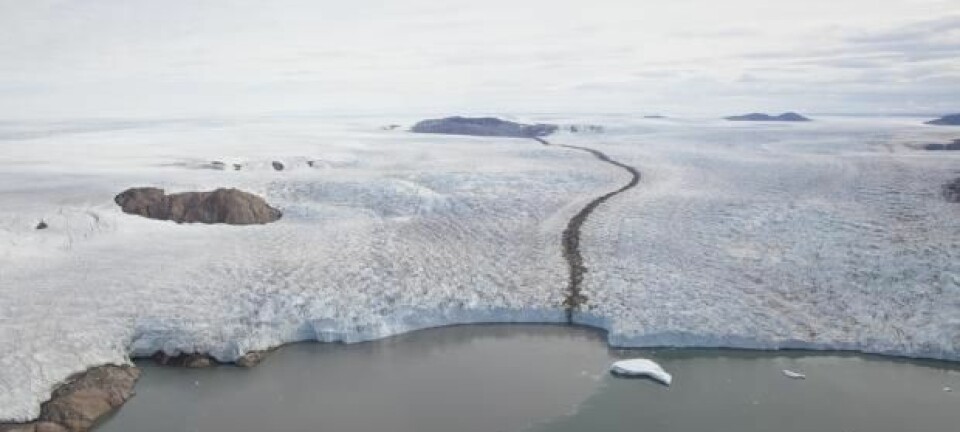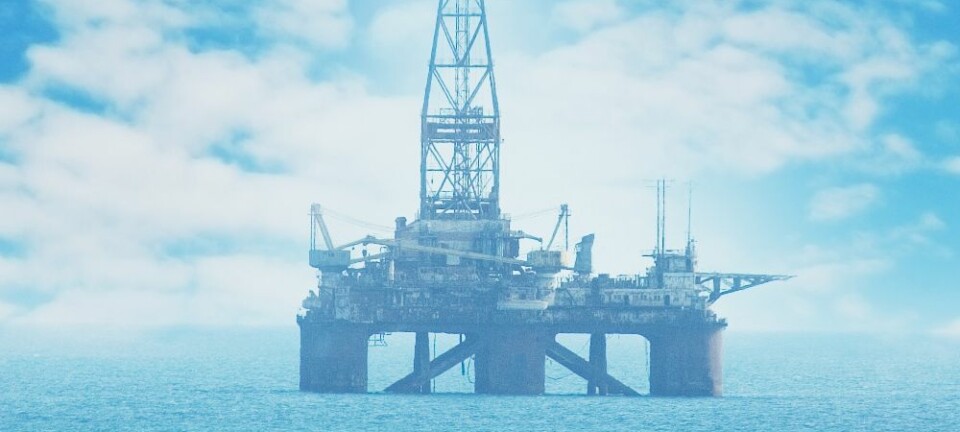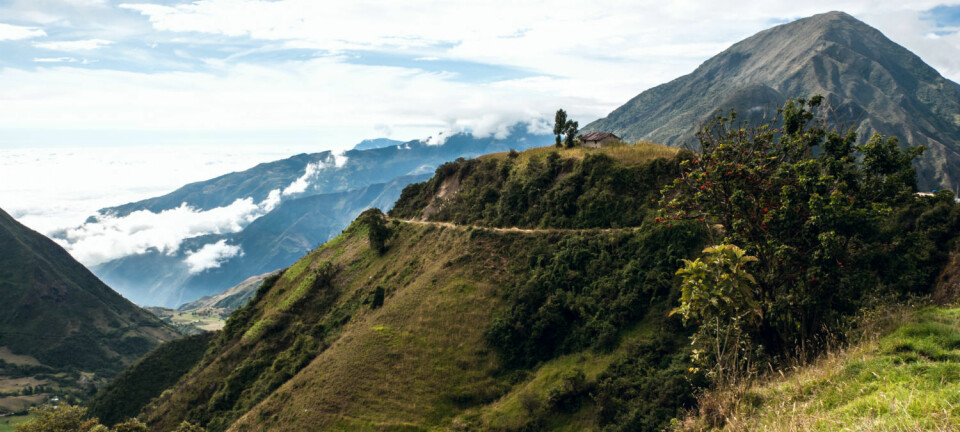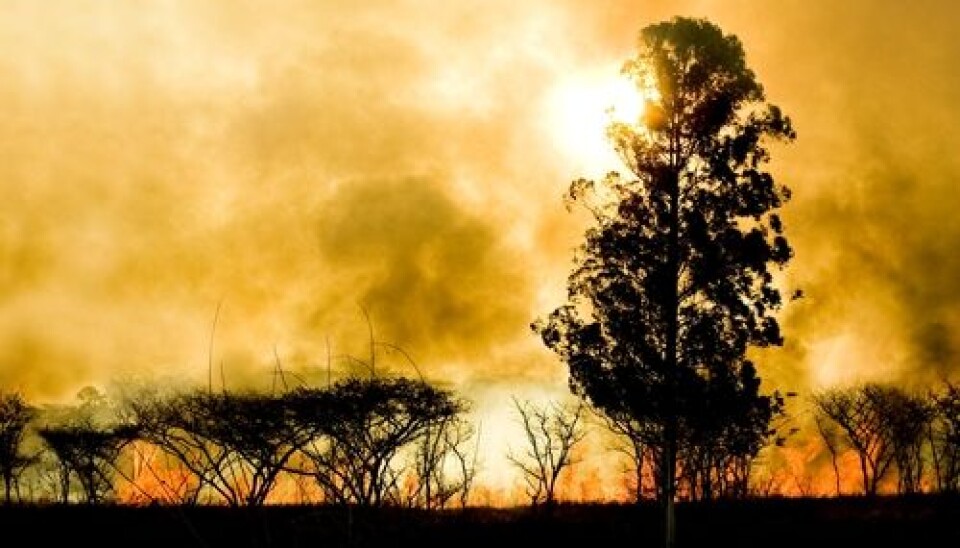
American forest fires are melting the ice on Greenland
Forest fires are covering the ice sheets with black particles that make the ice melt faster.
This year there were more forest fires in the northern hemisphere than any other year for the past decade and that’s spelling problems for the ice sheet on Greenland. That’s the conclusion of a new study by Professor Jason Box from the Geological Survey of Denmark and Greenland.
The fires mostly take place in uninhabited areas of North America, but they have become a global problem because carbon particles from the fires are spread across the globe by the wind.
A large part of these particles end up on the ice sheet on Greenland.
This darkens the top layer of the ice which means the heat from the sun is absorbed instead of being reflected, causing the ice to melt even faster.
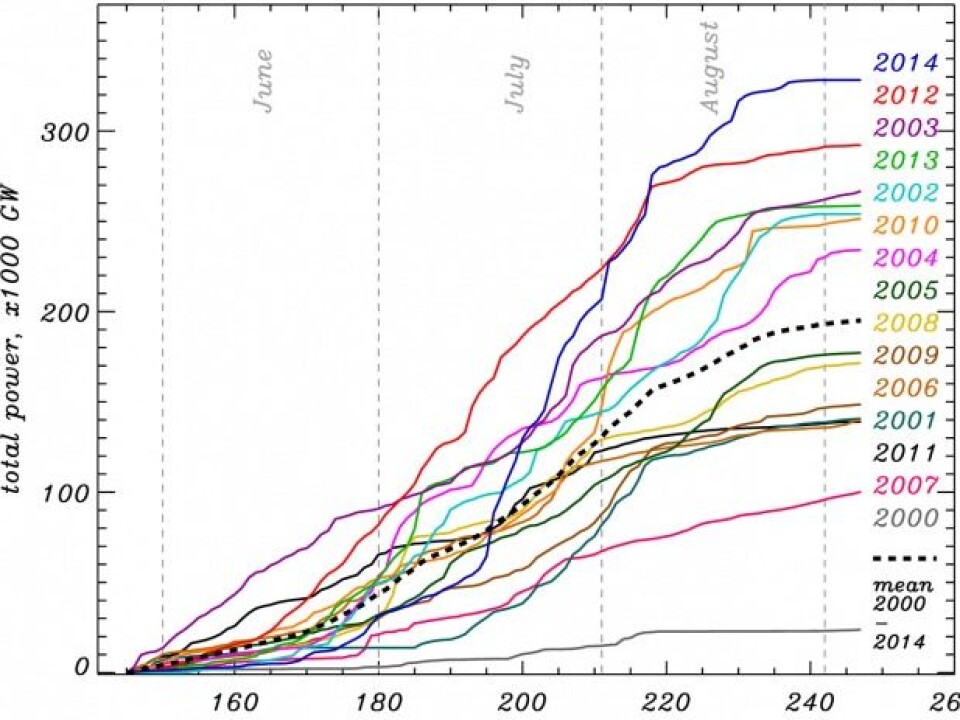
"The dark ice has a major influence on how quickly the ice sheet melts," says Box.
He used satellite data to determine the amount and extent of forest fires in 2014 and measured how much the ice sheet has lost its ability to reflect the sun's light.
The ice is darker than ever
Another recent study, published earlier this year, demonstrated the relationship between forest fires and the melting of the ice sheet.
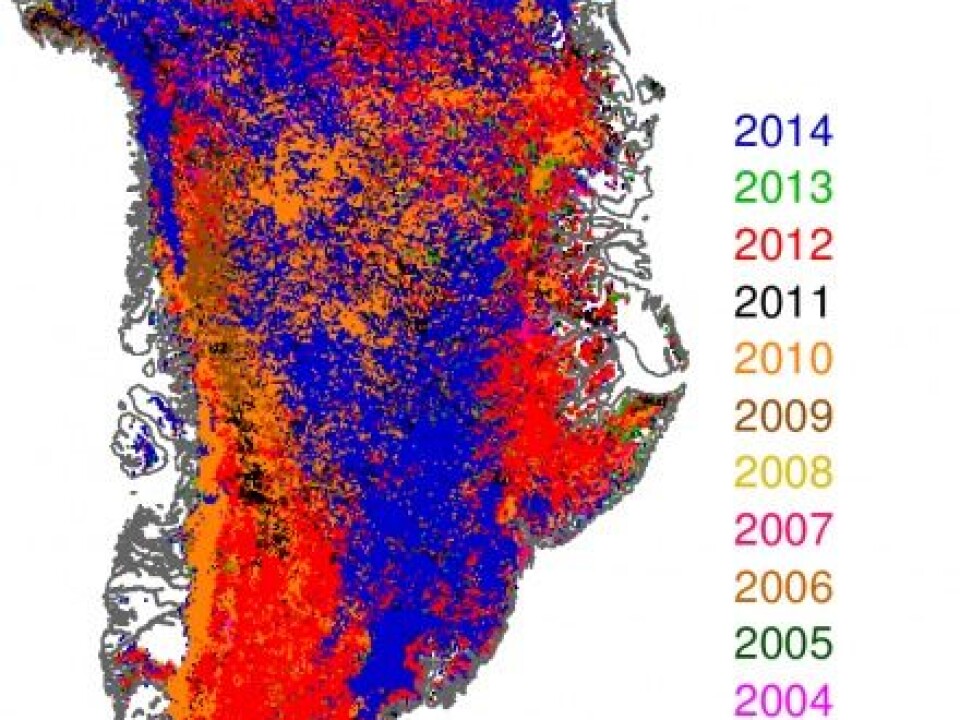
The study author Professor Ian Baker from Dartmouth College, USA, says the new Danish results are interesting and that there is a clear correlation between forest fires and the ice melting.
However, other factors should also be considered.
“The effect of the forest fires is biggest when the carbon particle stay on the ice and are not covered by new snow,” says Baker.
Box has just returned from a field trip in Greenland. He reports that the ice in August this year was darker on the upper half of the ice sheet than the previous years.
"In many places, the ice sheet is the darkest we've ever seen. Without the dark ice, the ice wouldn’t be melting at this speed," says Box.
Black ice melts faster
Over the past decade the ice sheet has become darker and darker.
According to Box, the ice has become 5.6 percent darker. He says that amounts to an extra amount of absorbed energy equal to approximately twice the amount of energy consumption in a year in the US.
The discolouration is due to soot from forest fires, dust, microorganisms, pollen, and pollution.
Box explains that the dark ice has a big influence on Arctic climate.
"The loss of the ability to reflect light can have far-reaching consequences. We know that this is the reason that temperatures are rising twice as fast in the Arctic compared to sub-arctic areas. It’s a very serious problem," he says.
--------------
Read the original story in Danish on Videnskab.dk
Translated by: Louisa Field

